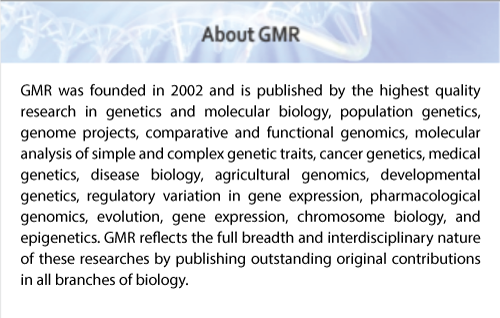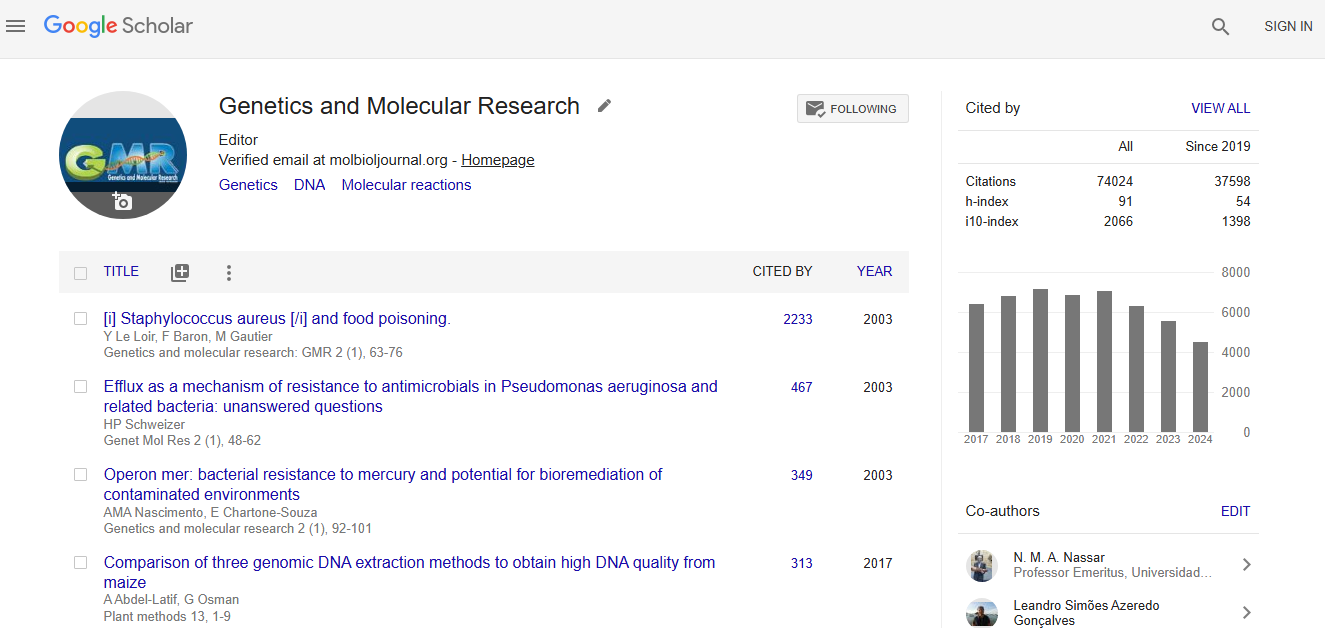Abstract
Analysis of diversity and relationships among orchardgrass (Dactylis glomerata L.) accessions using start codon-targeted markers
Author(s): L.F. Jiang, X. Qi, X.Q. Zhang, L.K. Huang, X. Ma and W.G. XieOrchardgrass, or cocksfoot, is an important perennial forage grass worldwide. The comprehensive understanding of orchardgrass accessions will benefit germplasm collection and breeding progress, and it will enhance efforts to improve forage yield and quality. Therefore, 24 novel, simple, polymorphic, and reliable start codon-targeted (SCoT) markers were used to analyze the diversity and genetic relationships among 95 orchardgrass accessions. In total, 273 polymorphic bands were detected with an average of 11.4 bands per primer. The average polymorphic rate for the species was 83.4%, suggesting a high discriminating ability of the SCoT technique for orchardgrass. The molecular variance analysis revealed that 69.13 and 30.87% of variation resided within and among groups, respectively, demonstrating that the orchardgrass germplasms had a higher level of genetic diversity within groups than among geographical regions and distributions. The distinct geographical divergence of orchardgrass was revealed between North America and Oceania. The unweighted pairgroup method with arithmetic mean dendrogram revealed a separation of 7 main clusters between 95 accessions according to the geographical origin. Furthermore, each cluster was divided into subgroups mainly according to the origin of its state. The genetic divergence of orchardgrass might be influenced by the ecogeographical conditions, climatic types, breeding systems and gene flow with variations in cultures, bird migration, and breeder selection. These results could facilitate orchardgrass germplasm collection, management, and breeding worldwide.
Impact Factor an Index

Google scholar citation report
Citations : 74024
Genetics and Molecular Research received 74024 citations as per google scholar report
